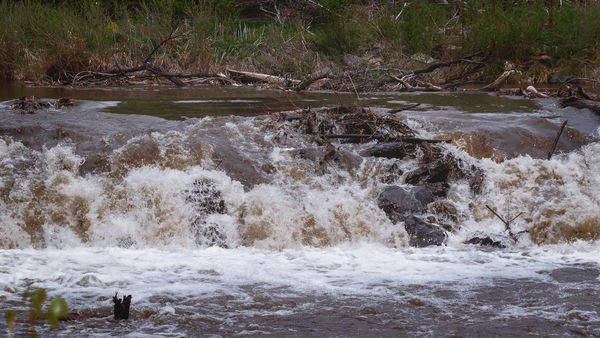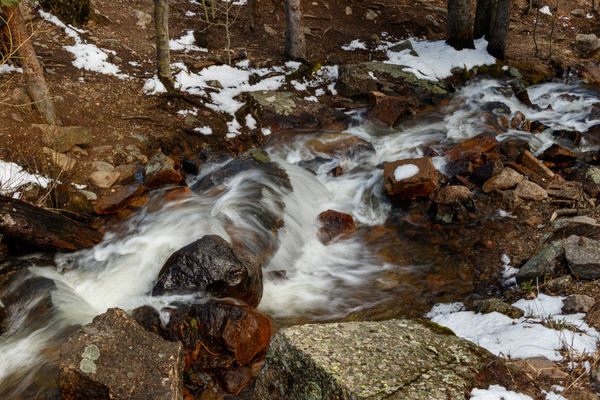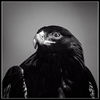Experimenting with Lightroom's Texture slider.
May 25, 2019 14:31:15 #
When I first heard of Lightroom's new "texture" slider, I thought of textures in the same manner as many on this forum use textures -- a subtle blending of layers. Lightroom's "texture" slider has nothing to do with that type of texture. (Lucky us -- a brand new meaning for a term that has been in use for years.)
Lightroom's texture slider can be used as a global adjustment, or a local adjustment, applied by one of the local adjustment tools. Pretty much every one of those who educate the masses in the use of LR and PS has opined that this tool be used as a local adjustment, rather than a global adjustment. In this, I heartily concur. Even if you were to used this tool strictly as a local adjustment, there is still plenty of room for experimentation.
By removing, or decreasing, texture, you can smooth things out. By adding, or increasing, texture, you can bring out detail. Decreasing texture on skin can smooth it out, whereas increasing texture on skin can make it look more gritty. I decided to see what the texture slider could do with moving water. When might I want to increase or decrease the texture of moving water?
My own personal preference for moving water is to allow for some amount of motion blur. I generally don't like my shots to have water frozen in an instant of time, but I also, generally, eschew so much blur that the water looks like a saucer of milk.
Last week, I took my camera with me on a bike ride. I came across a mini-waterfall on the Big Thompson River. It was a pretty bright day, and I did not bring a tripod with me, so I took the shot at that shutter speed dictated by the conditions. The result, of course, was water frozen in an instant of time. It did not really convey motion, although it was pretty obvious that the water had to be moving. I figured the water might be softened up by decreasing both texture and clarity, just where the water was moving over the logs. This ended up softening the focus of the particularly active parts of the water. It did not mimic a long exposure, but it did seem to make the particularly active parts of the water seem too active for the shutter speed. Thus, the water took on a very subtle explosive quality. It was motion, but that motion was more random than directed along a path.
Yesterday, we went to Rocky Mountain National Park. (Fantastic day for wildlife, including a bear.) I came across a stream of water flowing briskly over some rocks. The area was in shade, so I figured I could slow my shutter speed down just enough to get that motion I prefer. 1/6 of a second was all it took. I liked the result, but I decided to experiment with texture and clarity, to see if I could further define the path the water was taking. Once again, the result was subtle, but quite pleasing. Let's say I took a nice, clear photograph, and decided to paint in the flowing water -- real painting, not digital manipulation. If I were to use a very soft paint brush, I'd get something much like I saw in my 1/6 second exposure. If I were to use a somewhat stiffer paint brush, those stiffer bristles might make my brush strokes more visible, and if my technique were good, I'd probably be left with a more definite feeling of motion, in the water. That is what increasing texture and clarity got me. The effect was more noticeable in those areas where the water was flowing across rocks, rather than in free fall.
I'll just include the "after" versions. The purpose of including these shots, at all, is to show the results of the subtle post processing, rather than any attempt to show some fabulous photos.
Lightroom's texture slider can be used as a global adjustment, or a local adjustment, applied by one of the local adjustment tools. Pretty much every one of those who educate the masses in the use of LR and PS has opined that this tool be used as a local adjustment, rather than a global adjustment. In this, I heartily concur. Even if you were to used this tool strictly as a local adjustment, there is still plenty of room for experimentation.
By removing, or decreasing, texture, you can smooth things out. By adding, or increasing, texture, you can bring out detail. Decreasing texture on skin can smooth it out, whereas increasing texture on skin can make it look more gritty. I decided to see what the texture slider could do with moving water. When might I want to increase or decrease the texture of moving water?
My own personal preference for moving water is to allow for some amount of motion blur. I generally don't like my shots to have water frozen in an instant of time, but I also, generally, eschew so much blur that the water looks like a saucer of milk.
Last week, I took my camera with me on a bike ride. I came across a mini-waterfall on the Big Thompson River. It was a pretty bright day, and I did not bring a tripod with me, so I took the shot at that shutter speed dictated by the conditions. The result, of course, was water frozen in an instant of time. It did not really convey motion, although it was pretty obvious that the water had to be moving. I figured the water might be softened up by decreasing both texture and clarity, just where the water was moving over the logs. This ended up softening the focus of the particularly active parts of the water. It did not mimic a long exposure, but it did seem to make the particularly active parts of the water seem too active for the shutter speed. Thus, the water took on a very subtle explosive quality. It was motion, but that motion was more random than directed along a path.
Yesterday, we went to Rocky Mountain National Park. (Fantastic day for wildlife, including a bear.) I came across a stream of water flowing briskly over some rocks. The area was in shade, so I figured I could slow my shutter speed down just enough to get that motion I prefer. 1/6 of a second was all it took. I liked the result, but I decided to experiment with texture and clarity, to see if I could further define the path the water was taking. Once again, the result was subtle, but quite pleasing. Let's say I took a nice, clear photograph, and decided to paint in the flowing water -- real painting, not digital manipulation. If I were to use a very soft paint brush, I'd get something much like I saw in my 1/6 second exposure. If I were to use a somewhat stiffer paint brush, those stiffer bristles might make my brush strokes more visible, and if my technique were good, I'd probably be left with a more definite feeling of motion, in the water. That is what increasing texture and clarity got me. The effect was more noticeable in those areas where the water was flowing across rocks, rather than in free fall.
I'll just include the "after" versions. The purpose of including these shots, at all, is to show the results of the subtle post processing, rather than any attempt to show some fabulous photos.
Decreasing texture and clarity to soften the focus of the most active parts of the water.

(Download)
Increasing texture and clarity to define the path of the moving water.

(Download)
May 25, 2019 17:16:58 #
It looks like a useful tool. It supposedly affects medium radius details. Where some of the other local contrast tools are more smaller radius. You can apply it globally or with the local adjustment brush in Lightroom or Photoshop, or in photoshop you can select using any of the selection tools then open the camera raw filter to apply it just to the selection.
May 25, 2019 17:18:30 #
Here is bleirer's topic from a week or so ago:
https://www.uglyhedgehog.com/t-592045-1.html
Appears this is going to be a popular tool. Thanks so much, Jim, for sharing your tests, observations and suggestions.
https://www.uglyhedgehog.com/t-592045-1.html
Appears this is going to be a popular tool. Thanks so much, Jim, for sharing your tests, observations and suggestions.
May 25, 2019 20:26:05 #
May 26, 2019 05:58:26 #
The texture slider is a very nice addition to the adobe camera raw engine and Lightroom. Like all the other tools it's best used in moderation. Thanks for sharing your insights and image on it's use.
May 26, 2019 09:25:25 #
May 26, 2019 10:11:00 #
Thanks for you step by step process. I have used it to help decrease any noise in my shot. At least to my eye it looked like a decrease. But after viewing your shots it opens up many more possibilities. Thanks for sharing.
May 26, 2019 10:22:26 #
I think the whole idea is to experiment with any new tool, to see where it might lead. Everything I had read about the texture tool tended to concentrate on static objects, whether that happened to be big boulders or a face. I wanted to see if there was any value in using that tool on moving objects.
May 28, 2019 07:04:22 #
Haven't done a lot of playing with it but it does allow you to do blur effects and also an alternative to sharpening in some cases. Nice that it's available in the gradient, radial, and brush tools.
If you want to reply, then register here. Registration is free and your account is created instantly, so you can post right away.




